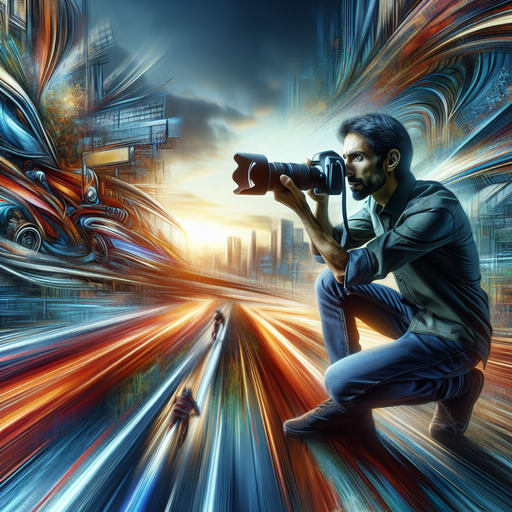
-
Table of Contents
Discover essential tips for capturing stunning action shots in photography! Elevate your skills and freeze those perfect moments. Learn more here.
Introduction
Capturing action shots in photography requires a blend of technical skill, quick reflexes, and a keen eye for detail. Whether you’re photographing a high-speed sporting event, wildlife in motion, or everyday moments filled with energy, mastering the art of action photography can transform fleeting moments into stunning visual stories. This guide provides essential tips to help you freeze motion effectively, from choosing the right equipment and settings to understanding the nuances of timing and composition. By following these tips, you’ll be well-equipped to capture dynamic scenes with clarity and impact, ensuring that each shot conveys the excitement and intensity of the moment.
Mastering Action Shots: Essential Photography Tips for Professional Results
Capturing action shots in photography requires a blend of technical skill, creativity, and timing. To achieve professional results, photographers must understand the nuances of their equipment and the dynamics of the scene they are capturing. One of the first steps in mastering action shots is to familiarize yourself with your camera’s settings. Utilizing the right shutter speed is crucial; a fast shutter speed, such as 1/1000th of a second or higher, can freeze motion and capture crisp, clear images of fast-moving subjects. Conversely, experimenting with slower shutter speeds can create a sense of motion blur, adding a dynamic and artistic element to your photos.
In addition to shutter speed, adjusting the aperture and ISO settings is essential for achieving the desired exposure and depth of field. A wider aperture (lower f-number) allows more light into the camera, which is beneficial in low-light conditions and helps isolate the subject from the background. However, balancing the aperture with a suitable ISO setting is necessary to avoid introducing noise into the image. High ISO settings can be useful in dim environments but should be used judiciously to maintain image quality.
Another critical aspect of action photography is understanding and anticipating the movement of your subject. Whether you are photographing a sporting event, wildlife, or a bustling city scene, predicting the trajectory and behavior of the subject allows you to position yourself optimally and capture the decisive moment. Continuous shooting mode, or burst mode, is an invaluable tool in this regard. By taking multiple shots in rapid succession, you increase the likelihood of capturing the perfect moment amidst the action.
Equally important is the use of autofocus settings. Modern cameras offer various autofocus modes, such as continuous autofocus (AF-C) or AI Servo, which are designed to track moving subjects. Selecting the appropriate autofocus mode ensures that your subject remains sharp and in focus, even as it moves unpredictably. Additionally, utilizing focus points strategically can help you maintain focus on the most critical part of the scene.
Lighting plays a pivotal role in action photography. Natural light can be both a friend and a foe, depending on the time of day and weather conditions. Shooting during the golden hours—shortly after sunrise and before sunset—provides soft, warm light that enhances the overall aesthetic of your images. However, when shooting in harsh midday sunlight, using a lens hood or seeking shaded areas can help mitigate unwanted glare and harsh shadows. In indoor settings or low-light conditions, external flashes or continuous lighting can be employed to illuminate the scene effectively.
Composition is another key element that can elevate your action shots from ordinary to extraordinary. Employing techniques such as the rule of thirds, leading lines, and framing can guide the viewer’s eye and create a more engaging image. Panning, a technique where you move the camera in sync with the moving subject, can also produce striking results by keeping the subject sharp while blurring the background, thus conveying a sense of speed and motion.
Lastly, post-processing should not be overlooked. Editing software allows you to fine-tune your images, adjusting exposure, contrast, and color balance to enhance the final result. Cropping can also be used to improve composition and remove any distracting elements from the frame.
By mastering these techniques and continually practicing, photographers can capture stunning action shots that convey the energy and excitement of the moment.
Q&A
1. **How can I capture sharp action shots in photography?**
– Use a fast shutter speed (1/500s or faster).
– Set your camera to continuous shooting mode.
– Use continuous autofocus (AI-Servo or AF-C).
– Increase ISO if needed to maintain a fast shutter speed.
– Anticipate the action and pre-focus on the area where the action will occur.
– Use a wide aperture to allow more light and create a shallow depth of field.
– Stabilize your camera with a monopod or tripod if possible.